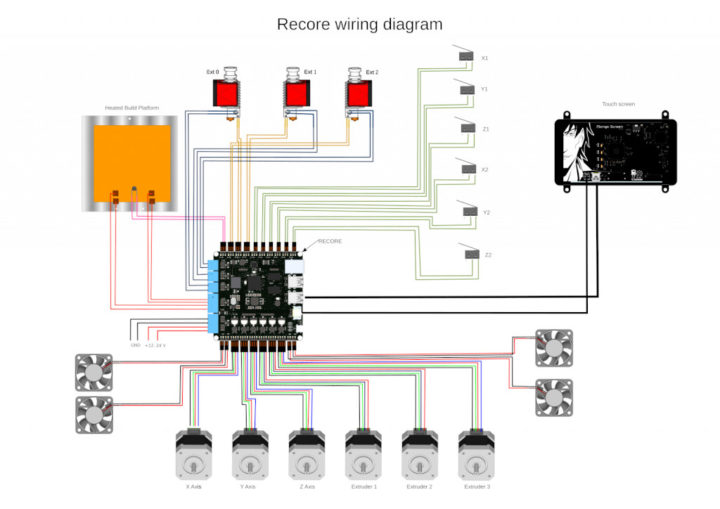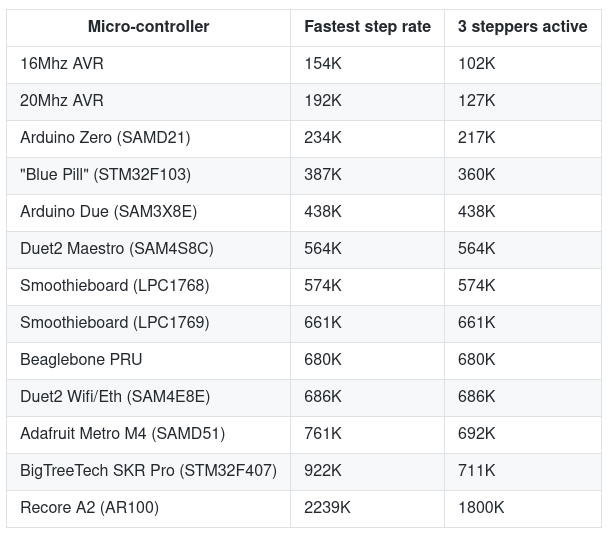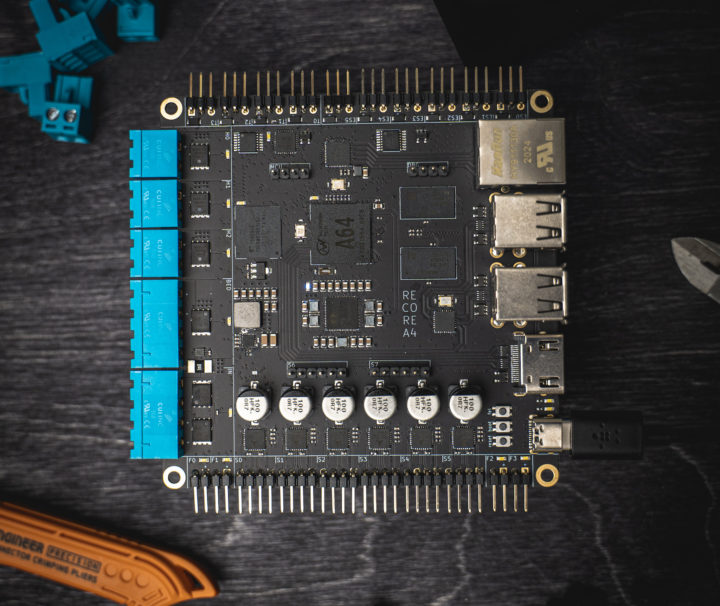Elias Bakken has been working on Recore 3D printer control board based on Allwinner A64 processor since 2019 and with revision “A5” of the PCB, Recore is now considered stable and will ship to customers.
But wait? Isn’t Allwinner A64 just a quad-core Cortex-A53 processor meant to run Linux? But 3D printer control boards require real-time I/O and that’s why many are designed with STM32, Arduino compatible Microchip MCU or other microcontrollers. The trick here is that Elias did not use the Cortex-A53 cores for real-time control, but instead the 300 MHz AR100 32-bit OpenRISC 1000 core found in Allwinner A64 SoC.
Recore specifications:
- SoC – Allwinner A64 quad-core Cortex-A53 processor running at 1 GHz, with AR100 32-bit core @ 300 MHz, Mali-400MP2 GPU
- System Memory – 1 GB DDR3 RAM
- Storage – 8 GB eMMC flash
- Video Output – HDMI output to connect a display
- Networking – Gigabit Ethernet
- 3D printer control
- 6x TMC2209 2A stepper motor drivers
- 3x heater outputs + high power heated bed up to 20A
- 4x thermistor/thermocouple inputs (software selectable)
- USB – 4x USB 2.0 ports
Of course, the Cortex-A53 cores are not just sitting here idles, and run Refactor Linux distribution for 3D printers based on Armbian Debian and pre-loaded with Klipper and OctoPrint.

That makes it a more compact solution, and probably easier to set up than the typical 3D printer board plus external SBC or TV box with Octoprint. Recore is not 100% open-source hardware, but you can find the PDF schematics, Allwinner binaries, and other files on Github, as well as Refactor distribution on a separate repository. Documentation to get started can be found on the Wiki.

If you’d like to learn more about Elias’ work on AR100 core, check out his recent blog post where he explains how he used the real-time core to toggle the pins much faster and predictably than using Linux, setup UART communication between the Cortex-A53 cores and AR100, and challenges in setting up the timer. If you prefer the explanations in video format, watch the video below.
Recore Linux 3D printer control board is available now and sold for $149 ex VAT and without accessories.

Jean-Luc started CNX Software in 2010 as a part-time endeavor, before quitting his job as a software engineering manager, and starting to write daily news, and reviews full time later in 2011.
Support CNX Software! Donate via cryptocurrencies, become a Patron on Patreon, or purchase goods on Amazon or Aliexpress





